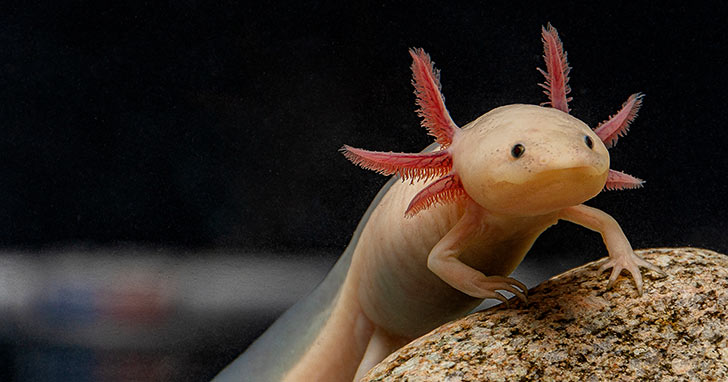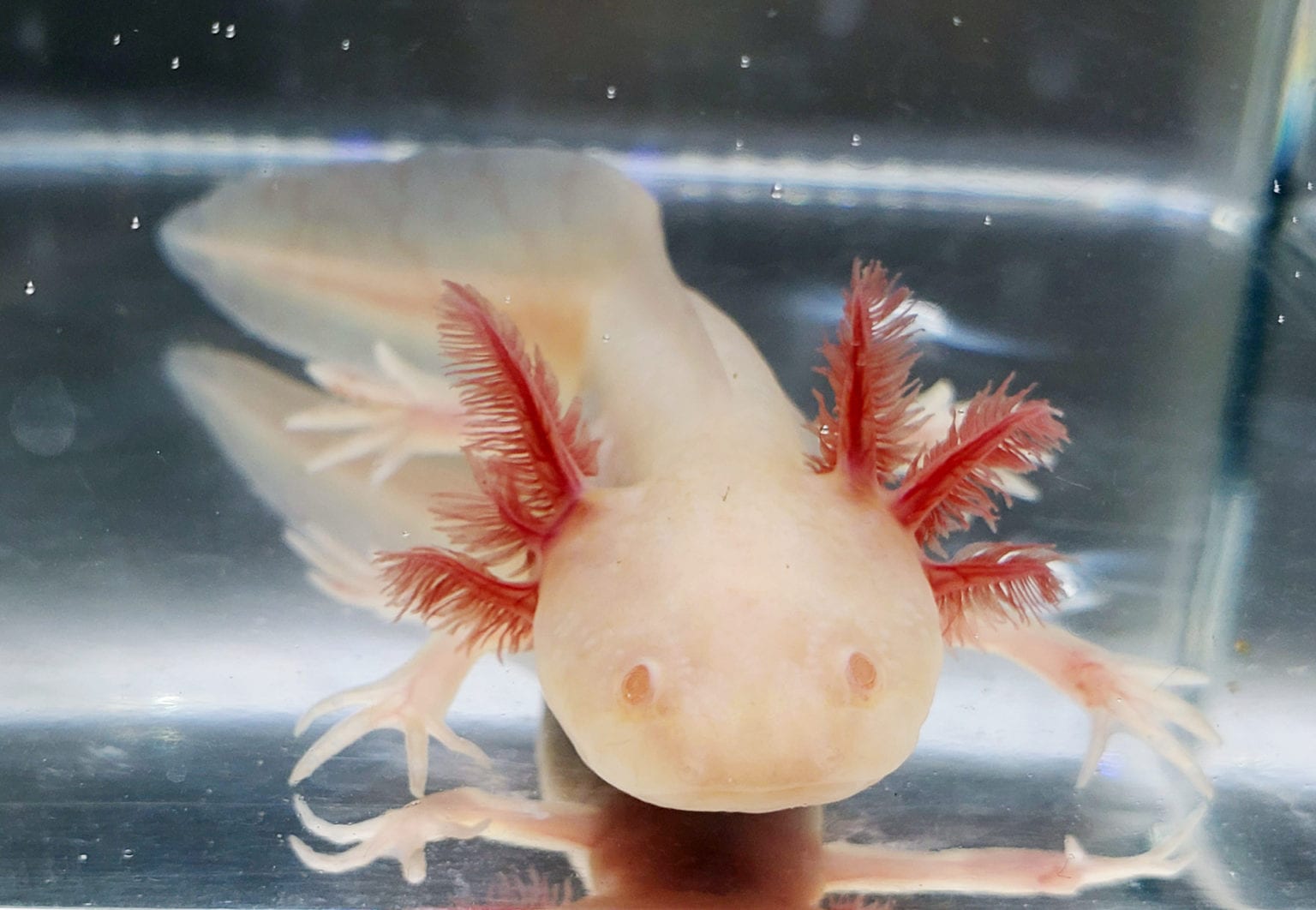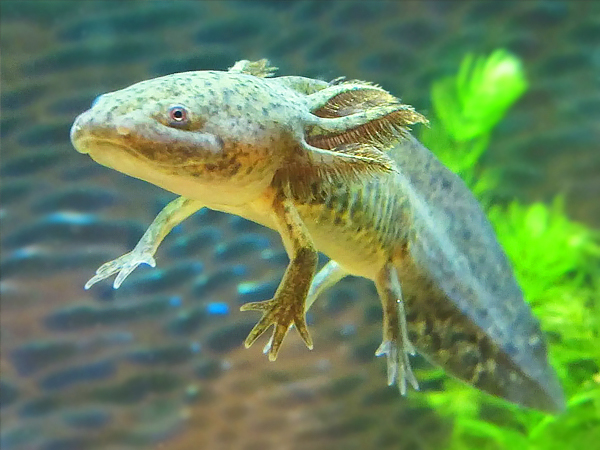Axolotls are a rare species of salamander that are known for their unique and vibrant colors. Through selective breeding and genetic engineering, humans have created several types of axolotl variants, each with its own distinct color and pattern.
In this article, we will explore the 10 most common types of axolotl morphs, including the White Albino Axolotl, Leucistic Axolotl, Piebald Axolotl, Golden Albino Axolotl, Copper Axolotl, Black Melanoid Axolotl, Wild Type Axolotl, GFP Axolotl, Chimera Axolotl, and Mosaic Axolotl.
You are reading: The 10 Types Of Axolotl Morphs
We will also discuss the genetics behind axolotl colors and the different types of pigment cells that produce them. Whether you are an axolotl enthusiast or simply curious about these fascinating creatures, this article will provide you with a comprehensive guide to the 10 types of axolotl morphs.

10 Types Of Axolotl Morphs
White Albino Axolotl

The White Albino Axolotl is a distinct type of axolotl morph with a white body, pink gills, and red or clear eyes. As they grow, the blood flow in their clear gills becomes visible, giving them a pinkish appearance.
Young White Albino Axolotls may even be almost see-through, especially on their belly and tail. Unlike other axolotls, White Albino Axolotls do not produce pigment, resulting in their lighter coloration. The care for White Albino Axolotls is similar to that of other axolotls.
Leucistic Axolotl
Leucistic Axolotls are a type of axolotl morph that have a pale white color and bright pink or red gills. Unlike Albino Axolotls, Leucistic Axolotls have dark-colored eyes and sometimes have freckles on their skin. Leucism is a genetic mutation that causes a lack of pigmentation in the skin, but not in the eyes.
Leucistic Axolotls are popular among axolotl enthusiasts due to their unique and striking appearance. The care for Leucistic Axolotls is similar to that of other axolotls.
Piebald Axolotl
Piebald Axolotls are a type of axolotl morph that have a white body with dark green or black spots or patches that go all down the body and sides, not just along the head and top like a Leucistic Axolotl.
Piebald Axolotls are often mistaken for heavily-spotted Leucistic Axolotls. Unlike Chimera and Mosaic Axolotls, Piebald is genetically inheritable. Piebald Axolotls are rare and cost around $300. The care for Piebald Axolotls is similar to that of other axolotls.
Golden Albino Axolotl
Golden Albino Axolotls are a unique type of axolotl morph that have a beautiful golden yellow appearance. They are similar to White Albino Axolotls in that they lack melanin, but they have a yellow or golden color due to the presence of xanthophores, which are pigment cells that produce yellow pigments.
Read more : The Top 8 Most Dangerous Spiders Of North America
Golden Albino Axolotls can range from almost pure white to peach, yellow, and orange-gold. They also have reflective spots and speckles on their bodies. Some Golden Albino Axolotls can even appear to “glow” under blue light. The care for Golden Albino Axolotls is similar to that of other axolotls.
Copper Axolotl
Copper Axolotls are a unique type of axolotl morph that have a brown or copper-colored body with light and dark spots, as well as iridophores. They are a rare type of axolotl, but can be found for sale from breeders and pet stores.
Copper Axolotls are a form of albinism, resulting in partial loss of pigment. They lack the enzyme tyrosinase, which normally oxidizes pheomelanin, the pigment responsible for red and yellow coloration.
Copper Axolotls are pale copper to caramel in color, and their body is covered in many small dark caramel-colored speckles. Some Copper Axolotls may also have a lavender hue. The care for Copper Axolotls is similar to that of other axolotls.
Black Melanoid Axolotl
Black Melanoid Axolotls are a type of axolotl morph that have a black or dark grayish body color with dark spots and black or dark purple gills. They are a popular type of axolotl due to their striking appearance and contrast well when housed with lighter-colored axolotls such as Golden Albino and Albino.
Melanoid Axolotls are a form of albinism, resulting in partial loss of pigment. They lack the enzyme tyrosinase, which normally oxidizes pheomelanin, the pigment responsible for red and yellow coloration.
Some Melanoid Axolotls may also have piercing green eyes, which is a result of the GFP (Green Fluorescent Protein) gene. The care for Black Melanoid Axolotls is similar to that of other axolotls.
Wild Type Axolotl

Wild Type Axolotls are a type of axolotl morph that most closely resemble their wild counterparts from Lake Xochimilco in Mexico. They have a mottled olive-brown coloration with dark eyes and bright red gills. The exact coloration of Wild Type Axolotls can vary, but they typically have a greenish/tan/gray appearance.
Wild Type Axolotls are the original and most common type of axolotl, and they are often used as a baseline for comparison with other types of axolotl morphs. In captivity, multiple color morphs of Wild Type Axolotls exist, including Albino, Leucistic, and Copper.
Wild Type Axolotls can be carriers for albinism, which means that they can produce Albino offspring even if they do not display Albino coloration themselves. The care for Wild Type Axolotls is similar to that of other axolotls.
GFP Axolotl
Read more : The Top 5 Largest Most Dangerous Spiders In Nebraska
GFP Axolotls are a type of axolotl that have been genetically modified to express green fluorescent protein (GFP) in their cells. This protein, originally found in jellyfish, causes the axolotl to glow bright green under UV light.
GFP Axolotls are popular among axolotl enthusiasts due to their unique and striking appearance. They are available for purchase from breeders and pet stores.
The care for GFP Axolotls is similar to that of other axolotls. GFP Axolotls are not harmful to the environment or to other animals, and they are safe to handle.
Chimera Axolotl
Chimera Axolotls are a unique type of axolotl morph that express two different morph variations. They are created when two different eggs fuse together during egg development, resulting in an axolotl with two different colors split down the middle.
Chimera Axolotls are rare and highly sought after by axolotl enthusiasts. They can be difficult to breed, and their offspring may not necessarily inherit the chimera trait. The care for Chimera Axolotls is similar to that of other axolotls.
Mosaic Axolotl
Mosaic Axolotls are a rare type of axolotl morph that are a result of a wild type and leucistic morph that spreads unevenly across the body. They have a unique and striking appearance, with patches of white and dark coloration that are distributed unevenly across their body.
Mosaic Axolotls are not a natural breed, but rather a result of selective breeding. They are highly sought after by axolotl enthusiasts and can be difficult to breed.
Mosaic Axolotls are available for purchase from breeders and pet stores. The care for Mosaic Axolotls is similar to that of other axolotls.
FAQS
1. What are axolotl morphs?
Axolotl morphs are different variations of axolotls that have been created through selective breeding and genetic engineering. They are categorized by their colors and color patterns.
2. How many types of axolotl morphs are there?
There are many different types of axolotl morphs, with some sources listing up to 20 different types. However, the 10 most common types of axolotl morphs are White Albino, Leucistic, Piebald, Golden Albino, Copper, Black Melanoid, Wild Type, GFP, Chimera, and Mosaic.
3. What is the difference between a White Albino Axolotl and a Golden Albino Axolotl?
White Albino Axolotls have a white body, pink gills, and red or clear eyes, while Golden Albino Axolotls have a golden yellow appearance due to the presence of xanthophores, which are pigment cells that produce yellow pigments.
4. What is a Chimera Axolotl?
A Chimera Axolotl is an axolotl that expresses two different morph variations. It is created when two
different eggs fuse together during egg development, resulting in an axolotl with two different colors split down the middle.
5. What is a Mosaic Axolotl?
A Mosaic Axolotl is a rare type of axolotl morph that has patches of white and dark coloration that are distributed unevenly across their body. It is created from a combination of two eggs fusing together: one egg is an albino/leucistic and the other is dark or wild type.
6. Are GFP Axolotls safe to handle?
Yes, GFP Axolotls are safe to handle and are not harmful to the environment or to other animals. They are not harmful to humans either.
Source: https://petstutorial.com
Category: Animals










